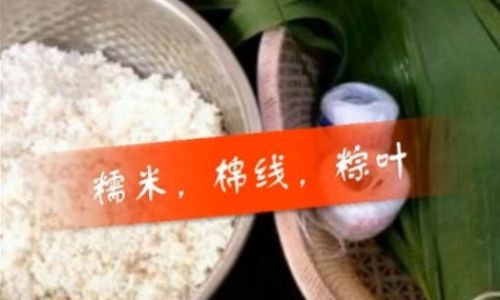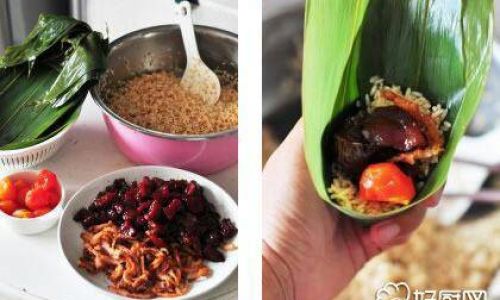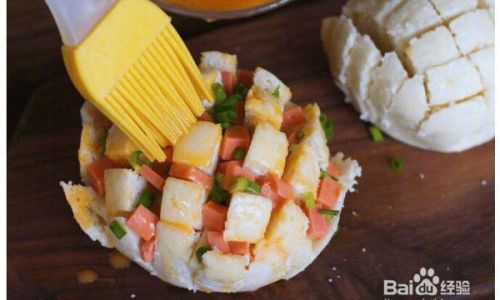Table of content
Introduction
The traditional Chinese festival of Dragon Boat Festival, also known as Duanwu Festival, is celebrated annually with various customs and traditions, among which eating zongzi, or rice dumplings wrapped in bamboo leaves, is a prominent one. While the most common fillings for zongzi include sweet options like red bean paste and dates, savory versions, particularly beef zongzi, have gained popularity in recent years for their unique flavor and texture. Making beef zongzi at home not only allows you to customize the ingredients to your liking but also ensures a fresh and authentic taste. This guide will walk you through the step-by-step process of preparing delicious beef zongzi, from selecting the right ingredients to perfecting the wrapping technique.

Ingredients Preparation
Before diving into the cooking process, it’s crucial to gather all the necessary ingredients. Here’s a comprehensive list for making beef zongzi:
- Beef: Choose a tender cut such as brisket or flank steak, preferably with some fat marbling for added flavor. About 1 pound (450 grams) of beef should be sufficient for a batch of 10-12 zongzi.
- Bamboo Leaves: Fresh or dried bamboo leaves are essential for wrapping. If using dried leaves, soak them in hot water for at least 2 hours to soften. Fresh leaves may require only a brief rinse.
- Sticky Rice: Short-grain glutinous rice, also known as sweet rice or sticky rice, is the base of zongzi. You’ll need about 3 cups (600 grams) for a standard batch. Soak the rice in water overnight or for at least 4 hours to soften it.
- Seasonings for Beef:
- Soy sauce: 3 tablespoons
- Oyster sauce: 2 tablespoons
- Shaoxing wine (or dry sherry): 2 tablespoons
- Brown sugar or honey: 1 tablespoon (optional, for a hint of sweetness)
- Garlic powder: 1 teaspoon
- Five-spice powder: 1 teaspoon
- White pepper: 1/2 teaspoon
- Salt: to taste
- Sesame oil: 1 tablespoon
- Aromatics:
- Fresh ginger, sliced thinly (about 2 tablespoons)
- Scallions, chopped (for garnish, optional)
- Other Fillings (Optional):
- Dried mushrooms or shiitake mushrooms, soaked and sliced
- Bamboo shoots, blanched and sliced
- Chestnuts, peeled and halved
- Strings: Cotton twine or food-safe string for tying the zongzi
Step-by-Step Instructions
Step 1: Preparing the Beef
-
Cutting the Beef: Begin by slicing the beef into thin strips or small cubes. Aim for pieces that are bite-sized and uniform in size to ensure even cooking.
-
Marinating the Beef: In a large bowl, combine all the seasoning ingredients listed above. Add the sliced beef and toss well to coat each piece evenly with the marinade. Cover the bowl with plastic wrap or transfer to a resealable plastic bag and marinate in the refrigerator for at least 2 hours, preferably overnight, to allow the flavors to meld together.
Step 2: Preparing the Bamboo Leaves
-
Soaking Fresh Leaves: If using fresh bamboo leaves, rinse them thoroughly under running water to remove any dirt or debris. Pat them dry with a clean kitchen towel.
-
Softening Dried Leaves: For dried bamboo leaves, soak them in a large pot of hot water for at least 2 hours, or until they become pliable. Drain and pat them dry.

-
Boiling the Leaves (Optional): To further soften the leaves and enhance their fragrance, you can boil them in water for about 5 minutes. Remove and let them cool slightly before handling.
Step 3: Preparing the Sticky Rice
-
Soaking the Rice: Place the glutinous rice in a large bowl and cover with water. Soak overnight or for at least 4 hours. Drain the rice well before use.
-
Seasoning the Rice (Optional): While the rice is soaking, you can add a touch of salt or a drizzle of sesame oil to enhance its flavor. Mix well.
Step 4: Assembling the Zongzi
-
Preparing the Workstation: Set up a clean, dry workspace with all your ingredients within easy reach. Have a bowl of water nearby to keep your hands and the bamboo leaves moist, which will prevent them from tearing.
-
Wrapping Technique:

- Take two bamboo leaves and overlap them slightly, with the smooth side facing up. Fold the bottom end up to create a small pouch.
- Place a spoonful of drained sticky rice at the bottom of the pouch.
- Add a few pieces of marinated beef, followed by any optional fillings like mushrooms, bamboo shoots, or chestnuts.
- Top with another layer of sticky rice, ensuring the filling is completely covered.
- Fold the sides of the bamboo leaves inwards and then fold the top down over the filling, creating a tight, triangular shape. Secure the zongzi by tying it with cotton twine or food-safe string.
-
Repeating the Process: Continue wrapping the remaining ingredients until you’ve used up all the beef and rice. The number of zongzi you end up with will depend on the size of your pouches.
Step 5: Cooking the Zongzi
-
Boiling Method:
- Fill a large pot with enough water to fully submerge the zongzi. Bring the water to a rolling boil.
- Carefully add the zongzi to the pot, ensuring they are not overcrowded. The water should cover the zongzi by at least 2 inches.
- Reduce the heat to a gentle simmer and cook for about 3-4 hours, or until the rice is tender and the beef is cooked through. Check the water level occasionally and add more boiling water if necessary to keep the zongzi submerged.
-
Steaming Method:
- Alternatively, you can steam the zongzi. Place them in a steamer basket over boiling water, ensuring they are not touching each other.
- Cover the steamer and steam for about 3-4 hours, or until the rice is cooked and sticky.
Step 6: Serving and Enjoying
-
Cooling Down: Once cooked, remove the zongzi from the pot or steamer and let them cool slightly. This will make them easier to handle and the flavors will continue to develop as they cool.
-
Untying and Serving: Carefully untie each zongzi and serve warm or at room temperature. You can drizzle a little extra soy sauce or sesame oil over the top for added flavor.

-
Garnishing (Optional): Garnish with chopped scallions or a sprinkle of sesame seeds for an extra touch of color and flavor.
Tips for Perfect Beef Zongzi
- Marinate Longer: Marinating the beef overnight will yield the best flavor.
- Use Fresh Ingredients: Fresh bamboo leaves and high-quality beef make a significant difference in taste.
- Tight Wrapping: Ensure the zongzi are wrapped tightly to prevent the rice from escaping during cooking.
- Adjust Cooking Time: Cooking time may vary depending on the size and density of your zongzi. Check for doneness by gently pressing on the zongzi; they should feel firm and cooked through.
- Storage: Leftover zongzi can be stored in the refrigerator for up to 3 days or frozen for longer storage. Reheat in boiling water or the microwave.
Conclusion
Making beef zongzi at home is a rewarding culinary experience that combines tradition with creativity. By following these steps and tips, you’ll be able to create delicious, flavorful zongzi that are sure to impress your family and friends. Whether you’re celebrating Dragon Boat Festival or simply looking for a unique dish to enjoy, beef zongzi offer a savory twist on a timeless classic. Happy cooking!






0 comments